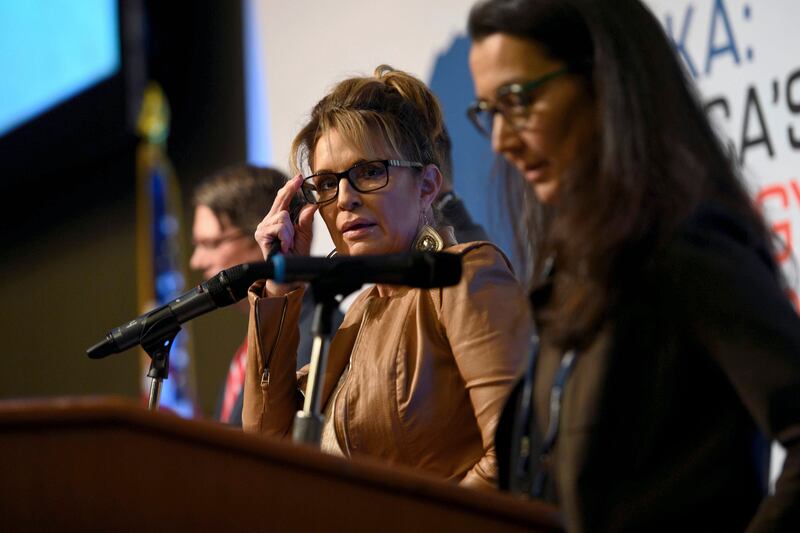The times I can legitimately say “I told you so” are few. In this case, however, I take no delight.
After many Republicans began claiming the 2020 election was “rigged,” I knew ranked-choice voting, if adopted, would just throw gasoline on that fire.
“Ranked-choice voting has its virtues,” I wrote in April of 2021, “but when voters throw the phrase ‘rigged election’ around as if they lived in a tinhorn dictatorship, this is not its moment in history.”
No sooner had Alaska announced the results Wednesday in its special election to fill the seat of the late Republican Rep. Don Young, than one of the losers, Sarah Palin, blamed ranked choice voting. It was convoluted and confusing, she said, according to The Wall Street Journal.
That was mild. Other, more extreme voices in the Republican Party took a harsher, more predictable tone. Sen. Tom Cotton, R-Ark., tweeted, “Ranked-choice voting is a scam to rig elections.”
He went on to tweet, “60% of Alaska voters voted for a Republican, but thanks to a convoluted process and ballot exhaustion — which disenfranchises voters — a Democrat ‘won.’”
It may well be that any Republican loss in the near future will be automatically used, at least by some, as an excuse to further erode trust in elections, but these allegations are ridiculous and cannot go unchallenged.
While 60% of Alaska voters may have chosen a Republican as their first choice, only 31% of them chose Palin. Another 28% or so chose Nick Begich III, who also is a Republican, as their first choice. The eventual winner, Democrat Mary Peltola, received about 40% of the first-place votes.
The first rule in party politics is to not split the vote. With two Republicans and a Democrat on the same ballot, it became extra hard for a Republican to win. But Begich took advantage of polling in July that, The Wall Street Journal said, showed 70% of Alaskans with an unfavorable opinion of Palin. It’s unlikely many Begich supporters checked Palin as their second choice.
Under ranked-choice voting, voters are asked to rank candidates on the ballot according to preference. In this case, they had three choices. If, after all ballots are counted, no candidate has more than 50% of the first-place votes, the candidate with the fewest votes is eliminated and that person’s second-place choices are distributed among the other two. Whoever then has more than 50% is declared the winner.
In this case, the official final count gave Peltola 51.5% and Palin 48.5%.
As ranked-choice results go, this one was easy. Without ranked-choice voting, Peltola would have won with 40%. With it, she can now assume office with the support of 51.5%, counting the people who said that, if Begich couldn’t win, she would be their next choice.
A difficult case would have been one in which Peltola won the first round, then lost due to second-place votes.
The larger question is this: Should an election be considered more legitimate if a candidate with only 40% of the vote is declared the winner, or if the winner got a majority of first- and second-place votes? For that matter, should any election be considered truly representative when only a fraction of eligible voters cast ballots?
The answer is that no democratic system is perfect. And none can survive constant, baseless attacks from critics saying every loss is rigged. Ranked-choice voting takes an extra step to determine, given all circumstances, what the voters truly prefer, and that makes it intriguing.
Alaska’s election matters because a number of states, including Utah, are experimenting with, or adopting, ranked-choice voting in various races. Last year, 21 Utah municipalities used this method. Some state lawmakers have talked about expanding it to other races where multiple candidates compete, and perhaps even to gubernatorial or congressional elections.
So far, the biggest complaint in Utah has been that the staff in county clerk offices have to work a little harder to tabulate and distribute votes. Voters, however, seem to understand the system and adapt to it easily.
Saying “I told you so” about how ranked-choice voting would be accepted by losers is hardly satisfying. I may have been wrong, however, about saying ranked-choice voting’s time has not come. If one group of politicians is determined to claim any election that doesn’t go their way is rigged, what difference does it make what system is used?
Alaska voters get to do this all over again as the same candidates compete once more in November to fill the next full House term. If Palin were to win next time, say, on the strength of second-place votes, it would be interesting to hear what she thinks of ranked-choice voting then.


